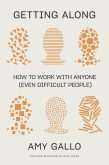You Just Don’t Understand: Women and Men in Conversation
Talking From 9 to 5: Women and Men at Work
By Deborah Tannen
(Morrow Paperbooks – $20 each)
Men and women approach conversations from different linguistic landscapes, and this leads to opposite interpretations of the same words or intentions, and subsequent misunderstandings.
Read Also

Employment Agreements Can Help Protect Your Farm
Entering into employment agreements with each of your farm employees should be at the top of every farm’s “to do” list, but caution must be exercised.
“Misunderstandings arise because the styles are different,” says Deborah Tannen, professor of linguistics and author of “Talking from 9 to 5: Women and Men at Work” and “You Just Don’t Understand: Women and Men in Conversation.”
No doubt all of us have encountered these misunderstandings in many a farm business conversation, plus the frustration that can result.
People around the world have diverse conversational styles. These styles are influenced by the country you grow up in and your ethnic culture, as well as by listening to and modelling speech after your parents, the era you grow up in, your economic class. And your gender.
When it comes to gender, Tannen says men and women often speak different “genderlects.” She says that from an early age girls and boys are spoken to differently by parents, teachers and other close connections and that adults accept various ways of speaking from children.
Furthermore, girls and boys interact with their same-sex peer groups in different ways: girls are ostracized by other girls if they try to appear better than the rest. “From childhood girls learn to temper what they say so as not to sound too aggressive, which means too certain,” says Tannen. “Girls who tell other girls what to do are called bossy … they discover they get better results if they phrase their ideas as suggestions, rather than orders.”
On the other hand, boys learn early on that they can obtain a higher status among their peers by displaying superiority. Tannen says that “boys learn to state their opinions in the strongest possible terms and find out if they’re wrong by seeing if others challenge them.”
These two styles, dubbed “rapport-talk” and “report-talk” by Tannen, affect how men and women interact in both professional and personal settings and is the underlying cause of miscommunication.
Rapport-talk is “a way of establishing connections and negotiating relationships.” Report-talk is more focused on a simple information exchange with little emotional significance. A man’s speaking style is helping him zero in on the message level of the conversation, while the woman’s is focused on the relationship aspect. Simply put, “to him, talk is information … but to her, talk is for interaction.”
“When women listen to men,” says Tannen, “they are not thinking in terms of status. Unfortunately, their attempts to reinforce connections and establish rapport, when interpreted through the (man’s) lens of status, can be misinterpreted as casting them in a subordinate position.” This means that a man, who is used to jockeying for the one-up position, will automatically cast the woman in the one-down position where she will appear incompetent or insecure. This can undermine her messages, her confidence, the trajectory of the dialogue and, ultimately, the outcome of the conversation.
Tannen also introduces the concept of “ritual talk,” as with the phrase “I’m sorry.” Women use this phrase a lot, but almost always as an expression of sympathy or concern, not as an apology. Women implicitly understand the ritual use of this phrase, but from men’s perspective of maintaining status, they hear an apology. “A person who apologizes takes a one-down position,” notes Tannen.
Tannen illustrates many situations where men and women are quite literally hearing different things and how this predominantly disadvantages women. She says that women are more likely than men to phrase their ideas as questions (sounds unconfident to those with an eye to status), take up less time with their questions (ditto), speak tentatively to soften the impact of what they have to say (ditto again), and avoid confrontation which opens them up to exploitation.
Men tend to assume that anyone who wants to take the floor and speak will — because they feel free to do so. In this sense, Tannen says that men’s speaking out freely can be seen as evidence that they assume women are at the same level of status: “We are all equals.” The meta-message of their behaviour could be translated as “competing for the floor,” but of course this is a ritual women don’t practice and will not, therefore, just jump in with their ideas. A misunderstanding arising from this type of interaction leaves women and their input on the sidelines.
You cannot run a farm business without communicating with others on or off the farm, but because of “genderlects” these interactions can be frustrating, disadvantageous to many, and end up way out in left field.
Tannen says the solution to everyone being equally heard, and to avoid miscommunication, is to learn the speaking rituals and linguistic styles of each other. “If more and more people understand the workings of conversational style, they will be able to adjust their own ways of talking and stand a better chance of understanding how others mean what they say … It is important not to take ways of speaking literally, they are rituals, and learning to understand the rituals will make it easier to understand the results that occur when the rituals are over.”
















